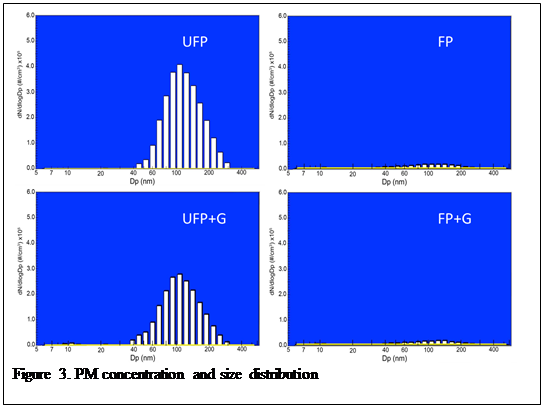Grantee Research Project Results
2016 Progress Report: Simulated Roadway Exposure Atmospheres for Laboratory Animal and Human Studies
EPA Grant Number: R834796C002Subproject: this is subproject number 002 , established and managed by the Center Director under grant R834796
(EPA does not fund or establish subprojects; EPA awards and manages the overall grant for this center).
Center: University of Washington Center for Clean Air Research
Center Director: Vedal, Sverre
Title: Simulated Roadway Exposure Atmospheres for Laboratory Animal and Human Studies
Investigators: McDonald, Jacob D.
Institution: Lovelace Biomedical & Environmental Research Institute
EPA Project Officer: Callan, Richard
Project Period: December 1, 2010 through November 30, 2015 (Extended to November 30, 2017)
Project Period Covered by this Report: August 1, 2015 through July 31,2016
RFA: Clean Air Research Centers (2009) RFA Text | Recipients Lists
Research Category: Human Health , Air
Objective:
Progress Summary:
|
|
PM (μg/m3)
|
NOx (ppm)
|
CO (100 ppm)
|
|||
|
EXPOSURE
|
Target
|
Actual
|
Pre
|
Post
|
Pre
|
Post
|
|
Road Dust
|
300
|
349
|
-
|
-
|
-
|
-
|
|
Road Dust + MVE
|
200+100
|
342
|
10.2 (2.5)
|
-
|
25.6 (8.2)
|
-
|
|
MVE Gases
|
0
|
13
|
28.6 (5.1)
|
25.6 (6.3)
|
66.2 (24.4)
|
58.5 (26.6)
|
|
MVE PM
|
300
|
328
|
24.6 (8.0)
|
4.0 (1.2)
|
54.6 (9.3)
|
8.0 (3.1)
|
|
Road Dust +
0.33 ppm Ozone
|
300
|
344
|
-
|
-
|
-
|
-
|
|
Wood Smoke
|
300
|
380
|
-
|
-
|
-
|
-
|
|
MVE (for ApoE-/- mice)
|
300
|
349
|
17.8 (4.8)
|
-
|
32.4 (8.2)
|
-
|



Future Activities:
Complete analyses and publications of recent studies.
Journal Articles on this Report : 4 Displayed | Download in RIS Format
| Other subproject views: | All 14 publications | 5 publications in selected types | All 5 journal articles |
|---|---|---|---|
| Other center views: | All 197 publications | 94 publications in selected types | All 93 journal articles |
| Type | Citation | ||
|---|---|---|---|
|
|
Mauderly JL, Kracko D, Brower J, Doyle-Eisele M, McDonald JD, Lund AK, Seilkop SK. The National Environmental Respiratory Center (NERC) experiment in multi-pollutant air quality health research: IV. Vascular effects of repeated inhalation exposure to a mixture of five inorganic gases. Inhalation Toxicology 2014;26(11):691-696. |
R834796 (2014) R834796 (2015) R834796 (Final) R834796C002 (2015) R834796C002 (2016) R834796C002 (Final) |
Exit |
|
|
McDonald JD, Chow JC, Peccia J, Liu Y, Chand R, Hidy GM, Mauderly JL. Influence of collection region and site type on the composition of paved road dust. Air Quality, Atmosphere and Health 2013;6(3):615-628. |
R834796 (2013) R834796 (2014) R834796 (2015) R834796 (Final) R834796C002 (2013) R834796C002 (2016) R834796C002 (Final) |
Exit Exit |
|
|
Oppenheim HA, Lucero J, Guyot A-C, Herbert LM, McDonald JD, Mabondzo A, Lund AK. Exposure to vehicle emissions results in altered blood brain barrier permeability and expression of matrix metalloproteinases and tight junction proteins in mice. Particle and Fibre Toxicology 2013;10:62. |
R834796 (2014) R834796 (2015) R834796 (Final) R834796C002 (2015) R834796C002 (2016) R834796C002 (Final) |
Exit Exit Exit |
|
|
Lund AK, Doyle-Eisele M, Lin Y-H, Arashiro M, Surratt JD, Holmes T, Schilling KA, Seinfeld JH, Rohr AC, Knipping EM, McDonald, JD. The Effects of α-Pinene-vs. Toluene-Derived Secondary Organic Aerosol Exposure on the Expression of Markers Associated with Vascular Disease. Inhalation Toxicology. 2013, 25(6):309-324. |
R834796C002 (2016) |
not available |
Supplemental Keywords:
Inhalation Toxicology, Diesel, Gasoline Engine, Health, Air, Scientific Discipline, ENVIRONMENTAL MANAGEMENT, Health Risk Assessment, Risk Assessments, Air Quality, mobile sources, Biochemistry, air toxics, Environmental Monitoring, Risk Assessment, bioavailability, vehicle emissions, aerosol particles, atmospheric chemistry, particulate matter, motor vehicle emissions, motor vehicle exhaust, cardiotoxicity, ambient particle health effects, air pollutants, air quality models, atmospheric aerosols, atmospheric particulate matter, vascular dysfunction, air pollution, ambient air quality, cardiovascular disease, airway disease, exposure assessmentRelevant Websites:
University of Washington Department of Environmental & Occupational Health Sciences Exit
Progress and Final Reports:
Original AbstractMain Center Abstract and Reports:
R834796 University of Washington Center for Clean Air Research Subprojects under this Center: (EPA does not fund or establish subprojects; EPA awards and manages the overall grant for this center).
R834796C001 Exposure Mapping – Characterization of Gases and Particles for ExposureAssessment in Health Effects and Laboratory Studies
R834796C002 Simulated Roadway Exposure Atmospheres for Laboratory Animal and Human Studies
R834796C003 Cardiovascular Consequences of Immune Modification by Traffic-Related Emissions
R834796C004 Vascular Response to Traffic-Derived Inhalation in Humans
R834796C005 Effects of Long-Term Exposure to Traffic-Derived Particles and Gases on Subclinical Measures of Cardiovascular Disease in a Multi-Ethnic Cohort
The perspectives, information and conclusions conveyed in research project abstracts, progress reports, final reports, journal abstracts and journal publications convey the viewpoints of the principal investigator and may not represent the views and policies of ORD and EPA. Conclusions drawn by the principal investigators have not been reviewed by the Agency.
Project Research Results
- Final Report
- 2015 Progress Report
- 2014
- 2013 Progress Report
- 2012 Progress Report
- 2011 Progress Report
- Original Abstract
5 journal articles for this subproject
Main Center: R834796
197 publications for this center
93 journal articles for this center
